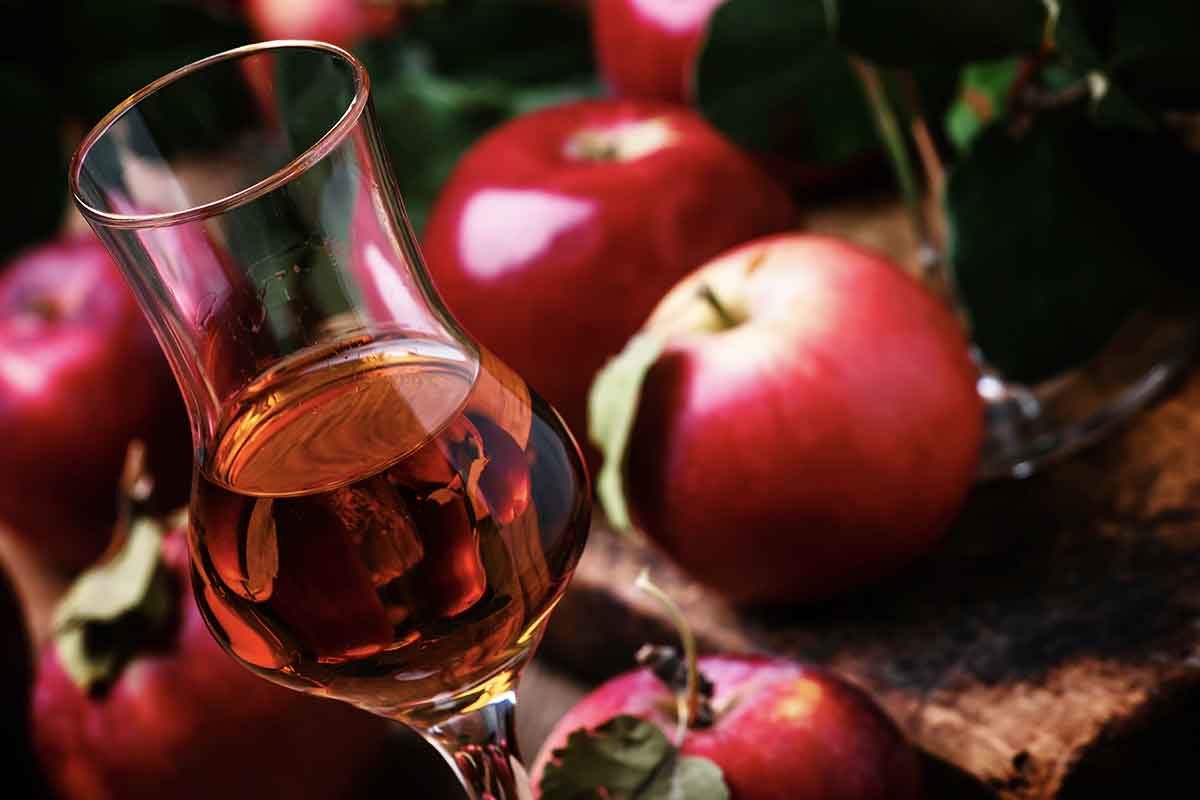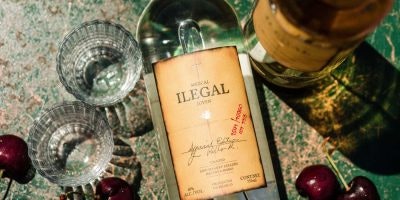Neither Applejack nor apple brandy is the modern force that bourbon is, but they have just as much claim to being America’s spirit. In fact, these apple-based spirits perhaps have a greater right to the title as their history of production stretches back to before the country was even founded.
Laird & Company, originally based in New Jersey, has been producing apple-based spirits since the early-to-mid 1700s. As a matter of fact, the would-be first president of the country, George Washington – also a distiller, of course – wrote to the brand in 1760 requesting its applejack recipe. Later, during the the Revolutionary War, he ensured his troops were well fortified with the apple spirit during their time in New Jersey.
Rick Kneipper, the founder of Shady Knoll Distillery, believes this historical pull is now helping to boost a long overshadowed category. “Apple brandy has been a part of American history since the 18th century, with George Washington himself distilling it,” he says. “I think this has started a renaissance in demand for handcrafted American apple brandy.”
But what exactly is applejack and how does it differ from or compare with apple brandy? And more importantly, which producers are worth checking out today?
Applejack vs Apple Brandy
Applejack and apple brandy are sometimes used interchangeably to refer to a spirit made from apples. But their actual definitions are different, and this is of particular importance for the category of blended applejack.
 Apple brandy
Apple brandy
“Modern American brandy is one of the few categories in the spirits world that is still left wildly open to the interpretations and imaginations of the distillers that make it, and apple brandy is no exception to this,” says Collin McConville, the head distiller of Rootstock Spirits.
The TTB’s lax regulations for brandy on the whole, and apple brandy as a sub-category on the one hand provides for flexibility (essentially they say apple brandy is brandy made of apples). But conversely, the lax definition fails to establish a baseline of quality control, category-wide standards and consistency.
Labeling Flexibility
However, the TTB does otherwise delineate the category of blended applejack. This style must contain only 20% apple brandy that’s aged for a minimum of two years, and can otherwise be blended with neutral spirits.
“Historically in the US, applejack was often made from a combination of apple and neutral spirits, which was often done to produce lighter, blended spirits that were cheaper than all-fruit apple brandy,” Kneipper says.
Modern usage though is trickier, because, as mentioned, a product calling itself “applejack,” may in fact qualify as a 100% apple brandy. Only the products that are labeled “blended applejack” are signifying that they’re produced with a majority share of neutral spirit.
For producers who aren’t trying to pull a fast one over on consumers, the flexibility that does exist can in fact be a positive. “The possibilities for applejack are not hampered by tradition or regulation,” McConville says, citing possibilities ranging from barrel finishes to different apple varieties and styles of fermentation and distillation. “The category is an open book that the modern distiller is currently filling with their passion and drive to make something unique.”
The History of “Jacking”
No exploration of applejack is complete without also examining the colonial art of “jacking.” This laborious process increases the alcohol percentage of a fermented product so that it approaches or exceeds the threshold to be considered a spirit.
“Modern applejack is a very different product from what many still traditionally think of as applejack,” McConville says. “The old colonial way of ‘jacking’ was to freeze a fermented beverage – in this case hard cider – and tap the alcoholic core, thus separating out the non-alcoholic portion and leaving behind a higher concentration of alcohol.”
In other words, by freezing and removing the watery (freezable) composition of a drink, you therefore condense or jack up the alcohol percentage that remains behind in a reduced quantity of liquid. Before you go trying this yourself, there’s a pretty hefty caveat emptor for the practice. “While this might make a tasty product, it has the drawback of leading to terrible hangovers, and as more than one old timer has mentioned to me, ‘mornings of waking up somewhere and not knowing how you got there!’” McConville says.
American Applejack & Apple Brandies to Try
Modern applejack is of course not being made in such a fashion. And while it’s different from apple brandy, it’s not necessarily worse — as long as the differences are on the table.
“I don’t think of applejack vs. apple brandy as being a competition for one being better than the other,” McConville says. “Instead, I look at the two as different expressions of the same raw material. Those different expressions lead them to be used in different ways or in different situations. You can sip on a nice Calvados-style apple brandy after a meal and relax by the fire, or you can use some applejack to make the classic Jack Rose cocktail to get the party started.”
With that said, here are some bottles of both styles to try.
Tattersall Distilling
Tattersall incorporates 16 types of apples sourced from within 30 minutes of its distillery into its Apple Brandy. The distillery then ages the spirit in new, toasted American oak barrels and bottles it at 45% ABV. The apple brandy works equally as well on the rocks as it does in any number of cocktail riffs. Also, some intriguing cask finish experiments may be in the works.
Shady Knoll Distillery
Shady Knoll’s Apple Brandy is first matured in new, toasted American oak barrels. Then it’s finished in Madeira barrels, adding an extra layer of rich flavor to the robust apple base. “I think our unique, complex taste results from the combination of over 120 varieties of apples in our orchard — more than anyone I know making American apple brandy,” says Kneipper. Indeed, that’s a staggering total. From there he follows a number of old world practices, including a six to nine month fermentation, and the use of an alembic Charentais pot still.
Rootstock Distillery
Rootstock makes both an unaged and two-year-old Applejack. The former is described by McConville as being like an overproof apple moonshine. Meanwhile, the aged rendition spends its time in used bourbon barrels. With its Apple Brandy, though, Rootstock leans into a Calvados approach. It begins by using more than a dozen apple varieties in its production. Notably, the apple brandy is aged in used, toasted red wine casks.
Laird & Company
Laird’s, the original, produces the full gamut across these categories, from Blended Applejack made from a combination of apple brandy and neutral grain spirit, to Straight Apple Brandy Bottled in Bond, a 100% apple brandy aged for a minimum of four years in charred oak casks and bottled at 100 proof. There’s even the unaged Jersey Lightning, a cult-classic cocktail choice. The top of its portfolio is where sipping connoisseurs will have the most fun, though, with 7 ½ year and 12-year-old expressions.
Osocalis Distillery
Dan Farber’s Osocalis Distillery hews closely to old world production, though he incorporates a mix of influences from Europe. Over a dozen apple varieties are used to produce a base cider he says in more reminiscent of those from the coastal Basque region. However, he tends to adhere to the distillation and maturation methods of Calvados. Osocalis Apple Brandy, if you can find it, shines as what’s likely the most complex and mature American apple brandy on the market.
Catoctin Creek Distilling
For its Quarter Branch Apple Brandy, Catoctin Creek uses a blend of five apples in a cider produced by Blue Bee Cidery. After distillation, the spirit matures for two years in new American oak casks. With the help of Virginia’s climate, and the usage of heritage apple varieties, the distillery believes its apple brandy is a true stand-in for what may have been made in the colonial days.
Ready to do your own applejack and apple brandy comparisons?
With Distiller, you’ll always know what’s in the bottle before you spend a cent. Rate, Review, and Discover spirits. Head on over to Distiller, or download the app for iOS and Android today!
Want to enjoy Distiller ad-free? Join Distiller Pro today to support the Distiller platform and keep ads off of your screen.


